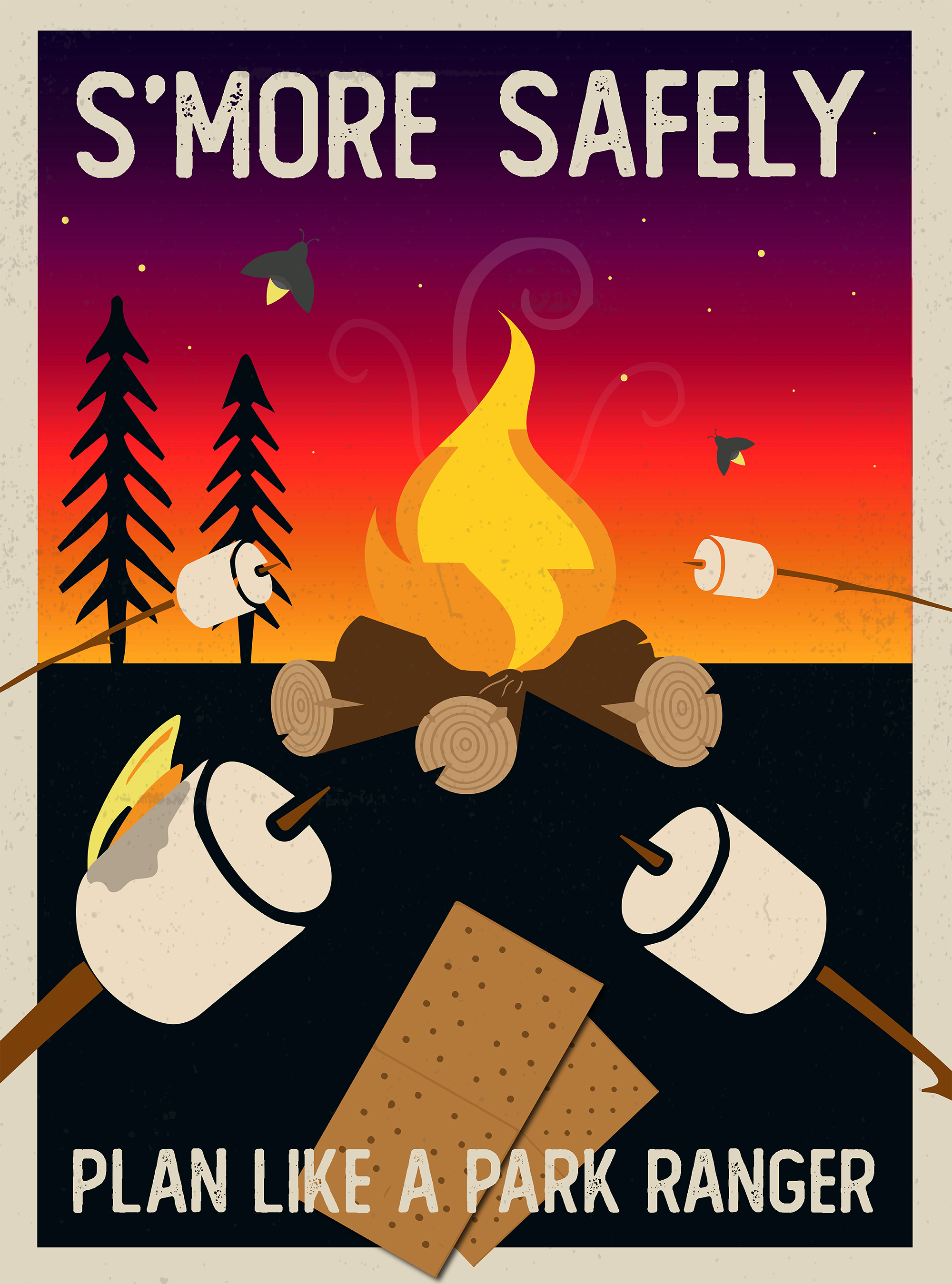News Release

Design: NPS/Turner
News Release Date: July 2, 2021
Contact: NewsMedia@nps.gov
Alternative text for the above graphic.
WASHINGTON – As the summer heats up (literally), the National Park Service reminds visitors to take extra precautions to prevent wildfires, heat-related illnesses and stay safe around wildlife. With record-breaking heatwaves and drought conditions, national park rangers invite visitors to follow new insider tips and Plan Like a Park Ranger to have fun and stay safe during park visits.
“Most wildfires in national parks are human-caused and easily preventable. Similarly, many weather-related injuries or sicknesses are preventable if you do your research and plan ahead,” said NPS Deputy Director Shawn Benge. “At a time when 60 percent of the country's wildland firefighting and support personnel are working on wildland fires, a little bit of planning can go far in helping to protect people, property and firefighters.”
In 2020, the National Park Service spent $54 million battling wildfires and over 230,000 acres of national park land were burned. Nearly 60% of the 636 wildfires in national parks in 2020 were human-caused.
Many parks have fire-related restrictions in place with additional restrictions expected throughout the summer and fall. Hot, dry and windy weather conditions make it easier for embers or tiny sparks to start a wildfire. These can be unintentionally caused by vehicles, equipment, campfires, camp stoves, fireworks or other flammable sources.
S’more Safely
Having an open fire is often a highlight and enjoyable part of camping. The smell of woodsmoke and the pop and hiss of burning wood in a campfire can brighten a night out in the woods, mountains, or beach. Follow these simple steps to build and enjoy a campfire. We always remember to drown, stir, feel, repeat until the area is cool to the touch. If the area you are camping has fire restrictions, enjoy some fantastic stargazing.
Learn more > Campfire safety tips
Fireflies not fireworks
Each year, fireworks, sparklers and flares cause wildfires that must be put out, with 60% of these fires starting in July! National parks can be great places to view local fireworks shows, however, personal fireworks are not permitted in national parks and should never be used near dry vegetation or flammable materials on windy days or during hot, dry weather conditions.
Learn more > Independence Day events
Prep your ride
Before we hit the road, we always check our vehicles for routine maintenance including tire pressure and brakes and make sure nothing is dragging on the ground. Driving on exposed rims and worn brakes can cause sparks, which could lead to unintentional fires. Avoid driving or parking on dry grass or brush as hot exhaust pipes and mufflers can also start fires. Practice safe towing, secure safety pins, use proper hitches and secure chains. Another pro tip is to keep a fire extinguisher in your vehicle.
Learn more > Practice vehicle safety
Beat the heat
High temperatures and the risk of heat illness can happen in any national park environment whether it’s an urban, historical, mountainous or desert park. It’s important to be prepared for high temperatures and the increased risk of heat-related illnesses while recreating. We always pack sun protection, salty snacks, and more water than we think we’ll need! No shame in taking plenty of breaks to rest in the shade when we can.
Learn more > Prevent Heat-Related Illnesses
Watching wildlife
We love watching wildlife – it's kind of why we’re rangers. We follow the rule of thumb: hold your thumb up at arm’s length and if you can cover the entire wild animal with your thumb you're probably a safe distance away. We treat wildlife with proper caution and always keep a safe distance. The safety of these animals, as well as our safety, depends on everyone using good judgment and following these simple guidelines.
Learn more > 7 Ways to Safely Watch Wildlife
To help keep themselves and others safe, park visitors are encouraged to review Centers for Disease Control and Prevention (CDC) guidance when making their plans to recreate responsibly. Consistent with the CDC recommendations, people who are not fully vaccinated must continue to wear masks indoors and in crowded outdoor spaces. Masks are required for everyone on all forms of enclosed public transportation.
About the National Park Service. More than 20,000 National Park Service employees care for America’s 423 national parks and work with communities across the nation to help preserve local history and create close-to-home recreational opportunities. Learn more at www.nps.gov, and on Facebook, Instagram, Twitter, and YouTube
Back to top of release.
Last updated: July 2, 2021
